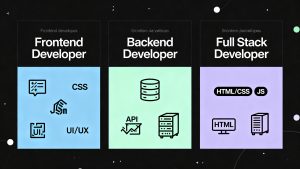As development cycles accelerate and applications become increasingly complex, many quality assurance (QA) teams are struggling to keep pace. Manual testing methods demand significant time, automation scripts break easily, and too many defects are discovered far too late in the process.
Artificial intelligence (AI) offers a way forward, helping organizations transform their testing workflows without requiring disruptive changes. By identifying the right pressure points, QA leaders can strategically introduce AI-driven practices to significantly enhance efficiency, coverage, and outcomes.
This article explores five clear signs that indicate the need for AI in testing and offers strategies for adopting AI tools successfully.
Sign 1: Test Case Creation Has Become a Bottleneck
The Challenge
For many organizations, manual test case creation consumes up to 60% of QA time. A single application may require thousands of test cases, often taking months to develop and update. During this time, development continues, creating further backlog.
AI’s Role
AI-driven test generation tools analyze workflows, user journeys, and API documentation to automatically generate comprehensive test cases, including edge scenarios. The result: faster creation times, broader coverage, and fewer missed defects.
Real-World Impact
- A retail company reduced test creation from six weeks to four days while improving coverage by 35%.
- A financial services firm generated 3,000 API test cases in two hours, saving three weeks of manual effort.
Implementation Approach
Begin with a small pilot. Document the current manual process, measure time and costs, and compare results against AI-based test generation. Evaluate improvements in speed, coverage, and defect detection.
Sign 2: Critical Defects Are Found Too Late
The Challenge
Defects discovered late in the cycle are costly. Bugs detected in production cost up to 100 times more to fix than those identified early, often causing delays and budget overruns.
AI’s Role
AI can predict where defects are most likely to occur by analyzing code complexity, development history, and prior defects. This enables teams to prioritize high-risk areas earlier in testing.
Implementation Approach
Start by reviewing the past year’s defect data. Use AI tools that highlight high-risk code segments and track improvements in earlier defect detection rates.
Sign 3: Test Suites Are Bloated and Inefficient
The Challenge
Over time, test suites accumulate duplicate and outdated cases. This increases test execution time and inflates costs while providing little real value.
AI’s Role
AI analyzes test execution data and effectiveness rates, identifying redundant tests and recommending optimization. This keeps test suites lean, relevant, and efficient.
Implementation Approach
Audit your suite using AI-powered analytics to flag redundancies and improve efficiency. Monitor improvements in execution speed, resource utilization, and coverage.
Sign 4: Testing Lags Behind CI/CD Pipelines
The Challenge
In continuous integration and delivery (CI/CD) pipelines, traditional testing often slows releases. Teams are forced to choose between speed and quality, undermining the benefits of agile practices.
AI’s Role
AI selects and runs only the most relevant tests for recent code changes, ensuring comprehensive coverage without bottlenecks. Real-time insights allow developers to address issues instantly.
Implementation Approach
Integrate AI tools with existing CI/CD systems to prioritize test execution dynamically. Track improvements in release velocity and production defect rates.
Sign 5: Test Data Management Consumes Excessive Resources
The Challenge
Test data creation and compliance management consume 20-30% of QA time. Using production data introduces security and compliance risks, while managing synthetic data manually requires significant effort.
AI’s Role
AI can generate realistic synthetic data that mimics production while avoiding privacy concerns. It also ensures coverage across edge cases.
Implementation Approach
Adopt AI-powered synthetic data tools to automate test data creation. Validate that the data meets compliance and realism standards for accurate testing.
A Framework for Successful AI Implementation
Implementing AI in testing requires a phased and structured approach:
- Phase 1: Assessment & Preparation
Evaluate infrastructure, assess team skills, analyze data quality, and plan budgets. - Phase 2: Pilot Implementation
Start with one focused project that demonstrates measurable success. Provide training and track performance indicators. - Phase 3: Scaling & Optimization
Gradually expand AI to more areas, integrate it into standard workflows, and establish strong governance and compliance practices.
Avoiding Implementation Pitfalls
AI delivers the best results when supported by careful planning. Common pitfalls include:
- Relying too heavily on AI without human oversight.
- Underestimating the importance of clean, high-quality data.
- Neglecting change management and training.
- Expecting instant results instead of realistic, phased improvements.
Accelerating AI Testing with Expert Support
Organizations do not need to navigate this shift alone. Specialist QA partners can help evaluate readiness, execute pilot projects, integrate tools into CI/CD pipelines, and ensure compliance while providing ongoing support and optimization frameworks.
Taking Action
Signs of inefficiency—such as slow test creation, late defect detection, bloated suites, or resource-heavy data management—are signals that it’s time to adopt AI in testing. Starting small, measuring impact, and gradually scaling ensures minimal disruption and maximum ROI.
For organizations that act early, AI in testing becomes more than a competitive advantage—it is an essential capability to maintain software quality in today’s fast-paced development cycles.
Read more such articles from our Newsletter here.



